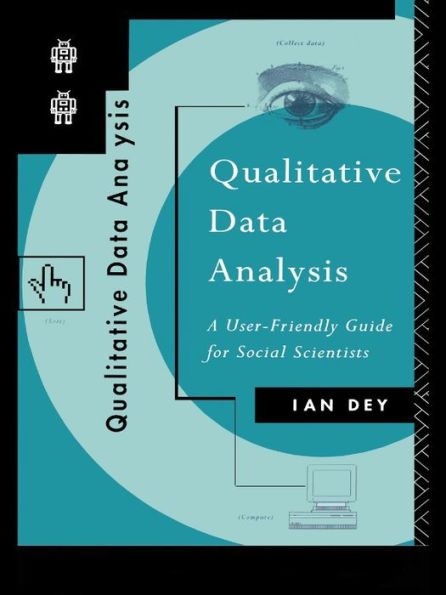First Published in 2004. Learning how to analyze qualitative data by computer can be fun. That is one assumption underpinning this introduction to qualitative analysis, which takes account of how computing techniques have enhanced and transformed the field. The author provides a practical discussion of the main procedures for analyzing qualitative data by computer, with most of its examples taken from humour or everyday life. He examines ways in which computers can contribute to greater rigour and creativity, as well as greater efficiency in analysis. He discusses some of the pitfalls and paradoxes as well as the practicalities of computer-based qualitative analysis. The perspective of "Qualitative Data Analysis" is pragmatic rather than prescriptive, introducing different possibilities without advocating one particular approach. The result is a largely discipline-neutral text, which is suitable for arts and social science students and first-time qualitative analysts.
1128398560
Qualitative Data Analysis: A User Friendly Guide for Social Scientists
First Published in 2004. Learning how to analyze qualitative data by computer can be fun. That is one assumption underpinning this introduction to qualitative analysis, which takes account of how computing techniques have enhanced and transformed the field. The author provides a practical discussion of the main procedures for analyzing qualitative data by computer, with most of its examples taken from humour or everyday life. He examines ways in which computers can contribute to greater rigour and creativity, as well as greater efficiency in analysis. He discusses some of the pitfalls and paradoxes as well as the practicalities of computer-based qualitative analysis. The perspective of "Qualitative Data Analysis" is pragmatic rather than prescriptive, introducing different possibilities without advocating one particular approach. The result is a largely discipline-neutral text, which is suitable for arts and social science students and first-time qualitative analysts.
74.99
In Stock
5
1

Qualitative Data Analysis: A User Friendly Guide for Social Scientists
300
Qualitative Data Analysis: A User Friendly Guide for Social Scientists
300Related collections and offers
74.99
In Stock

Product Details
| ISBN-13: | 9781134931453 |
|---|---|
| Publisher: | Taylor & Francis |
| Publication date: | 09/02/2003 |
| Sold by: | Barnes & Noble |
| Format: | eBook |
| Pages: | 300 |
| File size: | 8 MB |
About the Author
From the B&N Reads Blog
